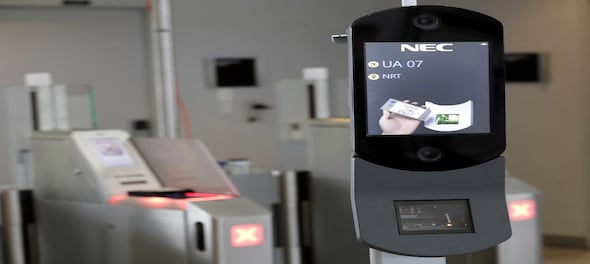
Indian airports are getting ready to implement DigiYatra, one of the pet projects of the Ministry of Civil Aviation. The DigiYatra project aims to enhance passenger experience by using digital technology.
A detailed policy paper issued by the Government of India shares the architecture of how the DigiYatra project is supposed to work and can be read here.
Hyderabad kicked off the biometric trials in July 2019, followed by Bengaluru and now Delhi Airport. While the Hyderabad Airport trial just used facial recognition to authenticate your face and get you access to the airport, Delhi and Bangalore Airport’s systems integrated fully with the Departure Control System of Vistara. This gave Vistara customers the opportunity to use facial recognition to enter the airport, proceed all the way to the boarding gate and use the face as a boarding pass.
First, the new biometrics-oriented process does not exclusively depend on Aadhaar. So, any government-authorised proof of identification can be used to register for DigiYatra. Second, current trials purge the data after the flight takes off. After the DigiYatra project goes live, the intention is to keep the DigiYatra ID in a central repository, where any airport can fetch the data from to authenticate the identity, and then needs to delete the data set one hour after the flight departs. However, how the central repository is subjected to privacy? The guidelines just refer to the IT Act 2000.
Airports across the globe are now moving to biometrics, but, on an opt-in model. Back in 2017, I ended up boarding an international Delta flight from New York, without having to show my boarding pass and passport again and again. It was a fast process. These efficiencies have also been noticed at other airports. For instance, British Airways is able to board 400 passengers at LA in 22 minutes, which is half the time compared to the usual.
The question around customer privacy , however, remains. Is it possible that your data would be compromised if you would use your face to go through an airport? There is no one clear answer. At the Hyderabad airport, I noticed that there was public excitement to try out the facial recognition. There were no release forms being signed and while the positives were being spelled out, the negatives, if any, were not being advised to the public. Airlines and airports certainly want this effort to succeed because it helps them turn around flights quicker and any efficiencies are widely appreciated. The ball then, is in the court of the Ministry of Civil Aviation, to ensure that the data is secured as they are the only ones holding on to anything with permanence.
If executed well, biometrics in aviation have a great deal to help the passenger experience. Ultimately, every new technology enhancement has some privacy concerns in the beginning, but once a strong case is made for the use of it, and safeguards are put in order, everyone falls in line. For instance, won’t you want to go through immigration through a gate with your biometrics, without having to talk to someone on your way in and out of the country? Yes, that is on the DigiYatra roadmap too.
Ajay Awtaney is a business travel & aviation journalist based in Mumbai, and the founder of the Indian frequent-traveller website Live From A Lounge (www.livefromalounge.com.) Ajay flies over 200,000 miles every year, and tweets about The Business of Travel at @LiveFromALounge.
Check out our in-depth Market Coverage, Business News & get real-time Stock Market Updates on CNBC-TV18. Also, Watch our channels CNBC-TV18, CNBC Awaaz and CNBC Bajar Live on-the-go!


Lok Sabha elections 2024: Seats to date, all you need to know about third phase of voting
May 6, 2024 4:49 PM
Concerns on low voter turnout a "myth"; absolute number of voters correct way to analyse: Report
May 6, 2024 2:57 PM
Haryana Lok Sabha elections 2024: A look at JJP candidates
May 6, 2024 2:26 PM
Yadav family members in focus in third phase of Lok Sabha polls in Uttar Pradesh
May 6, 2024 12:59 PM

